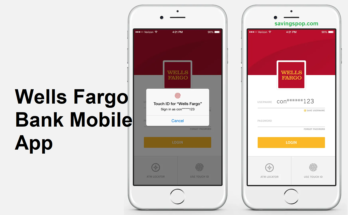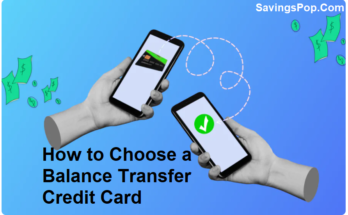When thinking about what is the best bank account for a teenager, it’s essential to look for alternatives that provide no monthly costs and a smooth right of entry to online banking. The perfect account must additionally offer educational resources to help young adults study dealing with their budget. Look for bills with low or no minimal balance requirements, a person-friendly cell app, and functions that permit parental oversight. Some bills can also even encompass rewards for suitable saving habits, making them not just practical but additionally beneficial for fostering economic literacy among young adults.
What is The Best Bank Account For a Teenager
Definition and Types of Bank Accounts for Teenagers
Teen bank bills are designed especially for young humans, typically between the a long time of thirteen and 18. This money owed often comes with functions that cater to the desires and financial literacy degrees of teenagers. The two fundamental types of financial institution bills for teens are checking accounts and savings debts.
- Checking Accounts: These money owed are designed for everyday transactions which include depositing money, taking flight coins, and making purchases using a debit card. They commonly come with functions like online banking, cell banking, and occasionally parental controls.
- Savings Accounts: These debts are intended to shop cash over time. They frequently offer interest at the deposited amount, encouraging teenagers to shop as opposed to spending. Savings accounts can also be a fantastic tool for coaching teens approximately the significance of saving and income hobbies.
Legal Requirements and Age Restrictions
Opening a bank account for a youngster entails positive legal requirements. In most cases, young adults below the age of 18 need a figure or father or mother to co-sign the account. This is to make sure that there’s a person answerable for the account, as minors cannot input into criminal contracts. Additionally, banks may require identity files together with a beginning certificate, Social Security wide variety, and a determined ID.
Key Features to Look for in Teenagers’ Bank Accounts
When deciding on a financial institution account for a youngster, it is essential to not forget features to benefit each teenager and the discerning.
No or Low Fees
One of the maximum crucial factors is the price structure. Many banks offer accounts without month-to-month expenses or low costs particularly designed for young adults. It’s critical to study the great print and make sure there are no hidden prices that might add up over time.
Parental Controls and Joint Accounts
Many teenage bank accounts include parental controls, allowing parents to screen account activity and set spending limits. Joint money owed, wherein each parent and the teenager have get right of entry, also are a popular option. This setup guarantees that mother and father can manual their kids whilst giving them a little independence.
Mobile and Online Banking Capabilities
In today’s digital age, having access to mobile and online banking is crucial. Teen bank accounts should offer robust digital banking features, including mobile apps, online account management, and digital payments. These tools can help teens manage their accounts conveniently and learn to navigate digital financial services.
Educational Resources and Financial Literacy Tools
Many banks provide academic resources and tools designed to enhance monetary literacy among teenagers. These can encompass budgeting gear, economic planning sources, and educational content material about handling cash. Such functions are precious in supporting teens to recognize monetary concepts and build good money conduct.
Rewards and Incentives
Some banks offer rewards and incentives for using youngster debts, such as hobbies on financial savings, cashback on purchases, or bonuses for reaching savings desires. These incentives can inspire teens to save extra and spend wisely.
Top Bank Accounts for Teenagers
Here are detailed reviews of some of the best bank accounts available for teenagers:
Bank of America Student Banking
Overview: Bank of America gives a Student Banking account tailored for teens aged sixteen and older. This account comes without month-to-month maintenance expenses, provided the scholar meets unique standards, which include being enrolled in school.
- Pros:
- No monthly fees with student status
- Access to a wide network of ATMs & branches
- Mobile and online banking features
- Cons:
- Minimum age requirement of 16
- Fees may apply if the student status is not maintained
Chase High School Checking
Overview: Chase High School Checking is designed for students aged 13 to 17. The account requires a figure or guardian to co-sign and gives capabilities like no monthly carrier fee, furnished the account is linked to a qualifying figure account.
- Pros:
- No monthly fees with a linked parent account
- Extensive ATM and branch network
- User-friendly mobile app
- Cons:
- Must be linked to a qualifying parent account
- Limited to high school students
Capital One MONEY Teen Checking
Overview: Capital One MONEY Teen Checking is a popular desire for teens elderly 13 and older. This account has no month-to-month costs or minimum stability requirements and gives a strong set of digital banking functions.
- Pros:
- No fees or minimum balance requirements
- Excellent mobile and online banking tools
- Parental controls and alerts
- Cons:
- Limited in-person banking options
- Interest rates may be lower compared to other accounts
Wells Fargo Teen Checking
Overview: Wells Fargo Teen Checking is available for young adults elderly thirteen to 17 and requires a determine or determine to co-signal. The account offers capabilities like no monthly service price and get right of access to a large network of ATMs and branches.
- Pros:
- No monthly fees
- Extensive ATM and branch network
- Parental controls and financial education resources
- Cons:
- Fees may apply for additional services
- Minimum opening deposit required
USAA Youth Spending (for military families)
Overview: USAA offers a Youth Spending account specifically for military families. This account is designed for teens aged 13 to 18 and comes with no monthly fees and a suite of financial education tools.
- Pros:
- No monthly fees
- Tailored for military families with unique benefits
- Comprehensive financial education resources
- Cons:
- Limited to military families
- Fewer physical branches
Comparison Chart
| Bank | Age Requirement | Monthly Fees | Parental Controls | Mobile/Online Banking | Special Features |
|---|---|---|---|---|---|
| Bank of America Student Banking | 16+ | No | Yes | Yes | Student status benefits |
| Chase High School Checking | 13-17 | No | Yes | Yes | A linked parent account required |
| Capital One MONEY Teen Checking | 13+ | No | Yes | Yes | No fees, robust digital tools |
| Wells Fargo Teen Checking | 13-17 | No | Yes | Yes | Extensive branch network |
| USAA Youth Spending | 13-18 | No | Yes | Yes | Military family benefits |
Opening a Teen Bank Account: Step-by-Step Guide
Opening a monetary organization account for a teenager is a sincere system, however, it’s crucial to make certain all necessities are met. Here’s a step-by-step guide:
Necessary Documents and Identification
- Teen’s Identification: This can encompass a birth certificate, a Social Security wide variety, and a faculty ID or passport.
- Parent’s Identification: A government-issued ID together with a driving force’s license or passport.
- Proof of Address: A utility invoice or a different document that confirms the figure’s address.
How to Apply Online vs. In-Person
- Online Application: Many banks offer online programs for youngster accounts. The procedure generally involves filling out an application form, uploading identification files, and putting in place the account online.
- In-Person Application: Visiting a financial institution’s department can provide an extra personalized experience. The financial institution representative can guide you via the technique, solve any questions, and assist installation of the account.
Setting Up Direct Deposits and Automatic Transfers
Once the account is open, putting in direct deposits (e.g., from an element-time job) and automated transfers (e.g., weekly allowance from parents) can assist in manipulating the account more correctly.
Tips for Parents to Get Involved and Monitor the Account
- Regular Check-Ins: Schedule ordinary discussions about the account’s reputation and spending behavior.
- Use Alerts and Notifications: Set up account alerts for transactions, low balances, and different sports to live informed.
- Teach Financial Responsibility: Encourage your teenager to song their spending, set financial savings dreams, and apprehend the significance of budgeting.
Managing a Teen Bank Account
Managing a teen bank account involves encouraging good financial habits and providing guidance when needed. Here are some tips:
Encouraging Regular Savings Habits
- Set Savings Goals: Help your youngster set short-term and lengthy-time period financial savings goals, inclusive of saving for a new device or college charges.
- Use Savings Tools: Many banks provide tools that assist teens set and tune their financial savings dreams.
Teaching Budgeting and Money Management
- Create a Budget: Work along with your teen to create a price range that outlines their profits (e.g., allowance, component-time job) and expenses (e.g., outings, school components).
- Monitor Spending: Use the financial institution’s app or online equipment to study spending behavior and make modifications as needed.
Using Banking Apps and Tools Effectively
- Explore Features: Familiarize yourself and your youngster with the capabilities of the bank’s app, which includes cell check deposits, cash transfers, and spending monitoring.
- Set Up Notifications: Enable notifications for transactions, low balances, and other important account sports.
Monitoring Account Activity and Setting Spending Limits
- Review Statements: Regularly review account statements with your teen to make certain they recognize their spending conduct.
- Set Limits: Use parental controls to set spending limits or regulations on positive styles of transactions.
Common Challenges and How to Overcome Them
While dealing with a teen bank account, you can come across a few challenges. Here are commonplace troubles and the way to address them:
Dealing with Overdraft Fees and Penalties
- Explain Overdrafts: Teach your youngster approximate overdraft fees and a way to avoid them by keeping track of their balance and spending inside their method.
- Set Up Alerts: Use account alerts to inform you and your youngster whilst the stability is low or a transaction exceeds the to be had finances.
Protecting Against Fraud and Identity Theft
- Educate on Security: Teach your teenager approximately the significance of defensive their account statistics, warding off phishing scams, and using secure passwords.
- Monitor Activity: Regularly display account interest for any unauthorized transactions and file them at once to the financial institution.
Managing Peer Pressure and Spending Habits
- Discuss Peer Influence: Have open conversations approximately peer pressure and how it can affect spending choices.
- Encourage Wise Spending: Teach your teenager to distinguish between wants and needs and to prioritize saving over impulse purchases.
Strategies for Maintaining a Positive Account Balance
- Track Spending: Encourage your teen to use the financial institution’s app or a budgeting tool to song their spending and live inside their price range.
- Plan Ahead: Help your youngster plan for upcoming prices and save thus to maintain a fantastic balance.
Expert Tips and Advice for Teen Banking
Here are some expert tips and real-life advice to help teenagers manage their bank accounts effectively:
Financial Advisors’ Insights on Teaching Teens About Money
- Start Early: Financial advisors recommend starting financial education early, even before starting a bank account. Discuss basic principles like saving, spending, and budgeting.
- Use Real-Life Examples: Use real-existence situations to explain financial concepts, along with saving for a family holiday or coping with household charges.
Real-Life Stories from Teens and Parents About Their Banking Experiences
- Success Stories: Share tales of teenagers who efficaciously managed their money owed, carried out their savings desires, and learned treasured economic instructions.
- Lessons Learned: Include anecdotes from mother and father approximately the challenges they confronted and the techniques that worked for them in teaching their teenagers about money.
Tips for Transitioning to Adult Bank Accounts
- Gradual Transition: As your teenager processes maturity, gradually transition them to an ordinary bank account with greater duties and fewer parental controls.
- Build Credit: Teach your youngster about the importance of building credit score and a way to responsibly use credit score playing cards and other economic merchandise.
Importance of Building a Credit History Early
- Secured Credit Cards: Consider introducing a secured credit card connected to your youngster’s account to help them construct credit history at the same time as gaining knowledge of how to control credit scores responsibly.
- Credit Education: Educate your youngster on how credit scores paint and the elements that affect them, including charge history and credit utilization.
Future Trends in Teen Banking
The banking landscape is continually evolving, and several trends are emerging that could impact teen banking:
Emerging Technologies and Innovations in Teen Banking
- Digital Wallets: The rise of digital wallets and mobile payment apps is transforming how teens manage their money. These tools offer convenience and enhanced security features.
- AI and Personalized Banking: Banks are increasingly using artificial intelligence to offer personalized banking experiences, such as customized savings plans and spending insights.
Impact of Digital Banking on Young Consumers
- Increased Convenience: Digital banking gives unprecedented comfort, permitting young adults to control their money owed, transfer cash, and tune spending from their smartphones.
- Enhanced Financial Education: Many digital banking platforms include instructional content and gear to help younger clients improve their economic literacy.
Predictions for the Future of Financial Education for Teenagers
- Gamification: Financial education tools that incorporate gamification can make learning about money management fun and engaging for teens.
- Integration with Schools: There is a growing trend of integrating financial education into school curriculums, providing students with the knowledge they need to manage their finances effectively.
Conclusion
Opening a bank account for a youngster is a sizeable step toward economic independence and literacy. By deciding on the proper account and offering steering, dad, and mom can assist their teenagers broaden crucial cash management capabilities. The best bank account for a teenager should offer no or low prices, strong virtual banking functions, parental controls, and economic education assets. By considering these factors and following the recommendations mentioned in this newsletter, parents and young adults can make a knowledgeable choice and set the muse for a secure financial future.
Additional Resources
Here are some additional resources to further enhance your understanding of teen banking and financial literacy:
Useful Websites
- Consumer Financial Protection Bureau: Offers resources and tools for financial education.
- MyMoney.gov: A government website dedicated to financial education for all ages.
Books
- The Everything Kids’ Money Book by way of Brette Sember: A Complete Guide to Money Management for Children and Young Adults.
- Smart Money Smart Kids by using Dave Ramsey and Rachel Cruze: Teaches parents and young adults how to win with cash.
Apps
- Greenlight: A debit card and app designed in particular for children and teenagers, supplying parental controls and monetary training tools.
- Bankaroo: A digital bank for kids, assisting them find out about coping with money through an interactive platform.
By leveraging those sources and the information provided in this text, mothers fathers, and teens can embark on a a hit financial adventure collectively.




